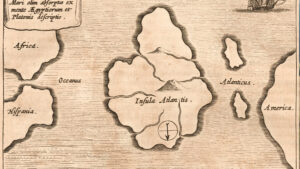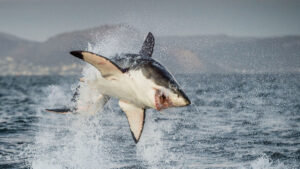Alone through Gobi. Be like a Honey Badger.
By Dominik Szczepański
Traveling through the desert for 70 days on an 1800 km trek when the water supply runs out, you can go without knowing whether in three days a well will be found. Either you go forward or you call a rescue team in to evacuate you. That will be one of the possible charms of this trip!
At the end of July, Mateusz Waligóra will go to Mongolia. The purpose of his trip is to make the first solo passage of the Gobi without outside support.
Gobi is the largest desert of Asia and the second largest desert in the world – only the Sahara is bigger. It has an extreme climate and very diverse terrain – steppes, mountains reaching up to 4000 m above sea level, extensive rocky debris and sand dunes. The temperature can drop to minus 30 degrees Celsius at night and rise to plus 45 during the day. Other threats are hurricane winds, sandstorms and thunderstorms.
One of the few people who tried to make a solo Gobi passage was Reinhold Messner, the legendary climber who was first to reach the summit of all eight-thousanders, completed his journey through that desert in a few weeks. However, he did not cover the entire route on his own – from time to time he was on horseback, a few times he said „yes” to shepherds, merchants or gold and oil seekers, who offered him a lift. “Gobi can not be won, because the look at this emptiness is almost unbearable” – he wrote later in the book “Gobi”.
Waligóra plans to start his solo expedition from the Mongolian and Chinese border in Bulgan, Khovd Province. From there, his route goes to the East, through the Altai Mountains and the entire Gobi desert to Sainshand in eastern Mongolia.

Mateusz Waligóra. Photo Daniel Grodziński
Dominik Szczepański: Why do you want to walk through the Gobi desert?
Mateusz Waligóra: – I wanted to go to China to the Takla Makan desert, but the number of formalities and permits needed to do this is enormous. Gobi is the second largest desert in the world after the Sahara and so far no one has ever crossed it alone, although many people have tried, for example, the famous climber Reinhold Messner.
I’ve been preparing for the trip for three years. I crossed the largest salt desert in the world, Salar de Uyuni, and I was in Patagonia, in Atacama. Salar makes the biggest impression. There is no life, no smells, no sounds and no water. Total emptiness and lack of any stimuli make the mind clear. But Atacama is special to me because I started to overcome my fears there.
What kind of fears?
– I was always afraid that there would be no water in such a place. For several years I could not deal with it. Finally, I decided to go to Atacama Desert to face myself and realize where my limits were. And there my greatest fear turned into my greatest passion.
Has that passed completely?
– No, but now, I can control it. I’m afraid of many things. While preparing for the Gobi, I imagine that I’m watching someone else do it. I put aside the fact that I am going there and I will have to travel 1800 km, somehow find water and deal with all my fears alone. Crossing a desert is a mental journey.
Is it good to be afraid?
– Yes, because thanks to fear, we do not get into unnecessary trouble.
The first weeks will be the hardest, because the body is getting used to the effort. After the first, second, and sometimes even third week I should catch the rhythm. The last stretch is the time when you are happy that you can already see the finish line, but on the other hand, you hope that the trip could have taken a while longer. It’s a kind of a paradox stage that makes you addicted.
The body gets used to the challenge through the effort. And what about the mind?
-Even the thought about walking through the Gobi is overwhelming for me. Messner, in his book “Gobi” often remarks how vast and terrifying this space is. So, I focus on the first two weeks, then on the next smaller stages, not on the whole trip. This way, the fear is replaced by a constant concentration. You have to pay attention relentlessly because if something goes wrong, you will have a problem and nobody will help you. You’re just on your own. Therefore, you’re focusing on taking the right amount of water and putting your shoes in the tent at night. Details that you do not think about every day, in the desert rise into rituals. By being focused, the fear subsides and confidence builds up.
I will have a total of 70-80 days of walking on the Gobi and will be repeating the same activities on a daily basis.
It sounds like total boredom.
– There are not many places in the desert that require paying close attention to the surroundings. The landscape is monotonous, the step sets the rhythm, and your head can wonder anywhere. You meditate. The trek is an exciting journey made for the mind. On a daily basis, there is no chance to have that much time for yourself.
Why do you want to trek Gobi alone?
– I cannot imagine being there with someone, because it would be a contradiction to the reason why I want to be there. I go to the desert to find solitude, peace and quiet.
And that’s why I am afraid of people the most in the desert. Encounters with drunken people were the bane for many travelers who visited Gobi before me. On the other hand, Gobi is a land of nomads. When you open a tourist guide to Mongolia, you will no doubt find many descriptions of the hospitality of its inhabitants. And if you get invited to join the party – can you say no?
It’s also about the style of the trip. If you accept anything; it would not be a true solo attempt.
– This doesn’t matter much to me – the packet of cookies I could get will not change anything. I should not run out of food. I will have about 60 kg of it, which I will carry in a cart specially prepared for this expedition. I will eat LyoFood freeze-dried food. It is perfect for using in the deserts, because for one meal you need only 350 ml of hot water. I plan to eat two large meals daily. I know my body. I know that when it is really hot, first of all I feel thirst, not hunger. This is also the reason why I am leaving on my trek in the desert slightly overweight. You lose weight on such expeditions. Without fat storage, you burn your muscles.
Returning to the treats from locals – they can be treacherous when you are dehydrated. The slightest stomach problem after eating something that has been offered to you in good faith can cause a very serious problem.
The lack of water is deadly. If I run out of food – I can manage. Man can survive without a meal for three weeks, without water only three days. This trip is a story about water. Can I find it? There are places on the Gobi, where during one year, water occurs, the next year it does not. And you can never be sure.
And what about the idea of a car that would drive ahead of you and look for water sources?
– It would take away the true character of the journey. Uncertainty rules in the desert. You don’t know whether in three days, when you run out of water, you’ll have a place to get it. Will the well be dry or if it can be found at all. This uncertainty can be exhausting and requires exceptional mental strength. I can pull 120 liters of water on my cart; a stock for 8-10 days and the range of my daily trek is 30-40 km. Therefore, the margin of error is very small. Water is a sanctity that unleashes unique emotions. In Australia, when I reached the well and found water in it, I could not hold back my tears. It’s strong emotions!
How to find water on the Gobi?
– Using the knowledge of those who walked it before me. During my trip I will also have to filter the found water, especially from the rivers. At the beginning of my expedition, I have to cross the Altai Mountains and there won’t be a shortage of water, thanks to springs and rivers. Sometimes there could be even too much of it from a storm, producing periodic rivers that may be very fast and crossing them becomes dangerous. Then I will enter the desert. The longest stretch without water that I will face is a distance of over 300 kilometers, or about 10 days of walking. Unfortunately, this is where the terrain will be the most challenging, the sandiest open space without any shade. These will probably be the most difficult days of the trip. Luckily, this episode ends in Dalanzadgad, the largest city in southern Mongolia. So, I will go with the thought that in a few days I will definitely reach water.
From Dalanzadgad, I will still have 500 km to Sainshand, where I want to finish my trip. There are three settlements on this section. I do not know if I am right, but I’m the least afraid of this part of my expedition. I will be already very used to the physical effort and should be mentally strong, because the biggest difficulties will be behind me. And the vision of the end of the expedition is pushing hard forward. On the other hand, the physical exhaustion will be the greatest then.
What do you expect at the end of the road?
– There is nothing waiting for me; neither reuniting with the family or special rewards. The fact that I accomplish the trek will be my personal success.
What other difficulties are you expecting on Gobi?
– I have to accept the fact that snakes, spiders and scorpions live there. But I’m more afraid of the wolves. Sarah Marquis, who twice attempted to cross the Gobi, regularly saw them around her tent in the early mornings.
No animals make life as uncomfortable and annoying as plants can do. Those growing in the desert are usually prickly. They could tear the tires and inner tubes of my cart. .
Sandstorms are also a threat. I try not to think about them because they are terrifying. I’ve seen them in movies and on photos; the storms produce kilometers of sand dust vertically.
What will you do if you catch such a storm?
– I will probably try to hide under the cart, breathe through my mask, wrap myself up in a camping sheet, and wait. Maybe in the tent? I’ll see. The nomads hide in their yurts; maybe I will be lucky, they will be nearby and will teach me more how to cope. There is no point in worrying about what is beyond your control. Sometimes you have to be like a honey badger – take everything as it is!
Expedition in numbers:
Date: July / August / September / October 2018 (departure from Poland 29.07)
Duration: approximately 70-80 days
Distance to walk: approximately 1800 km (more than across the South Pole normal route)
Style: without outside support (all equipment will be transported on a specially prepared cart)
The lowest expected temperature: -30 degrees Celsius
The highest expected temperature: +45 degrees Celsius
Food weight: about 60 kilograms
Amount of transported water: maximum 120 liters

Photo. Dawid Galiński






